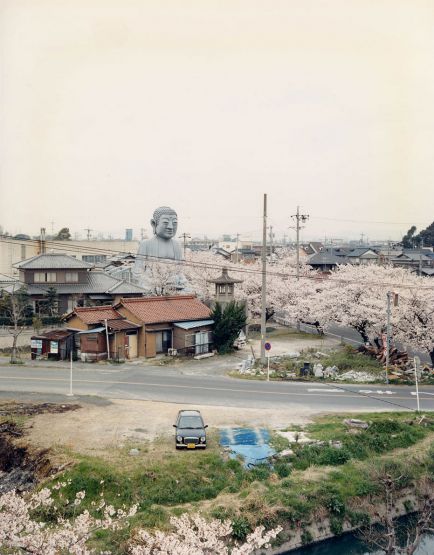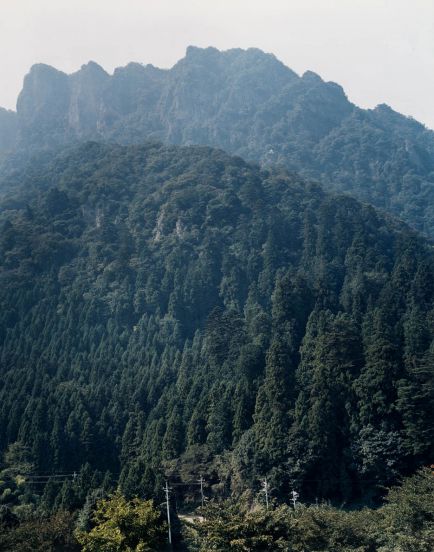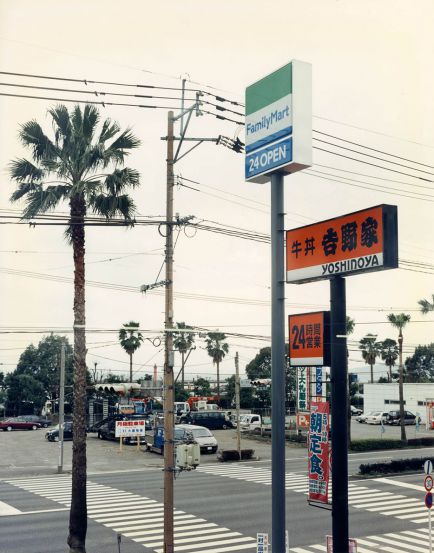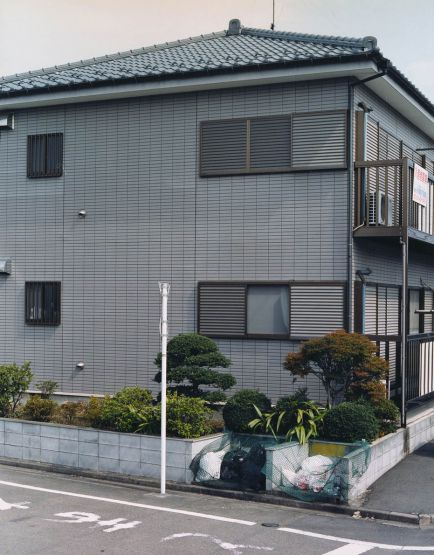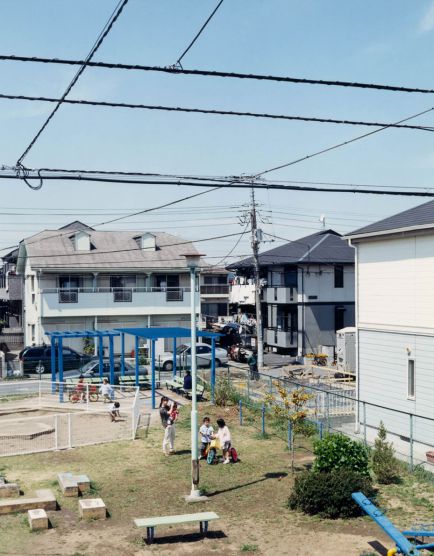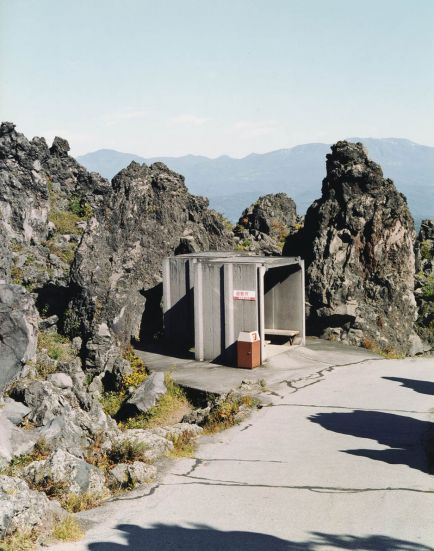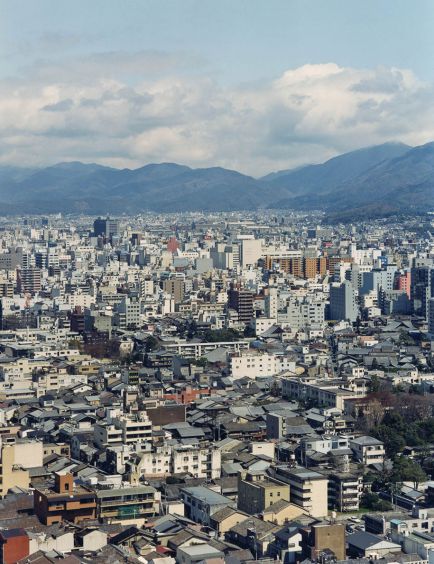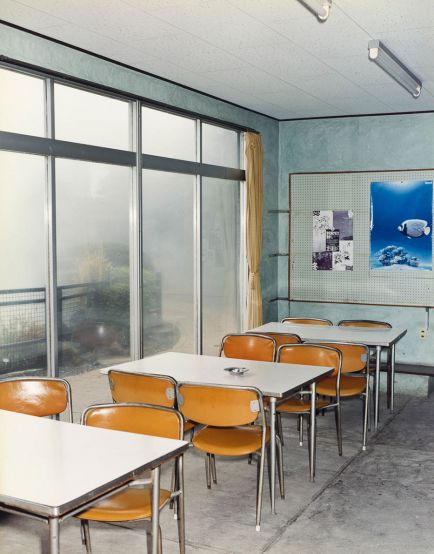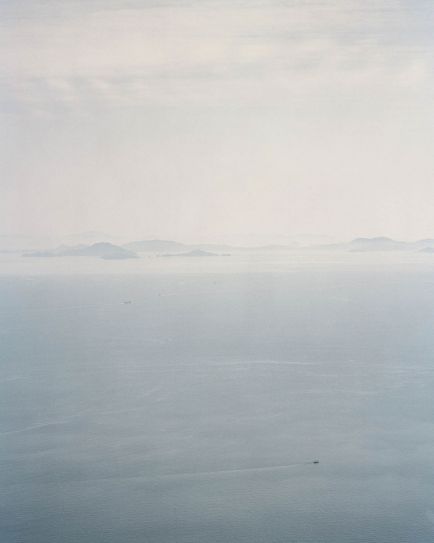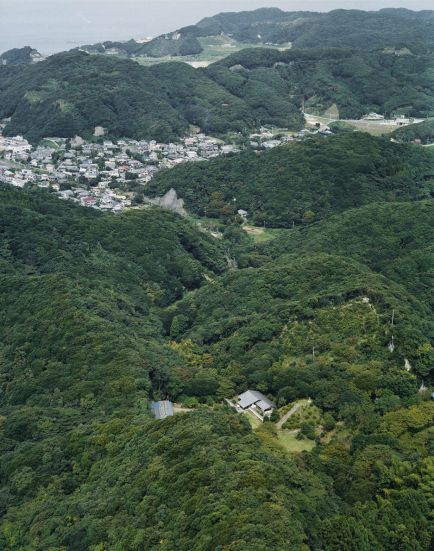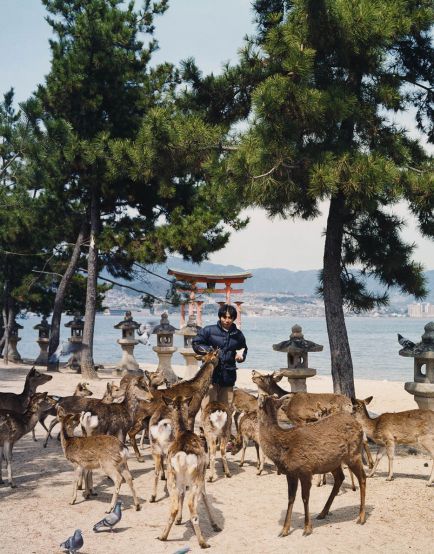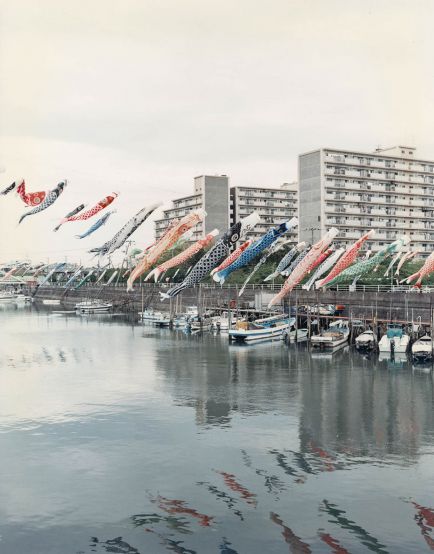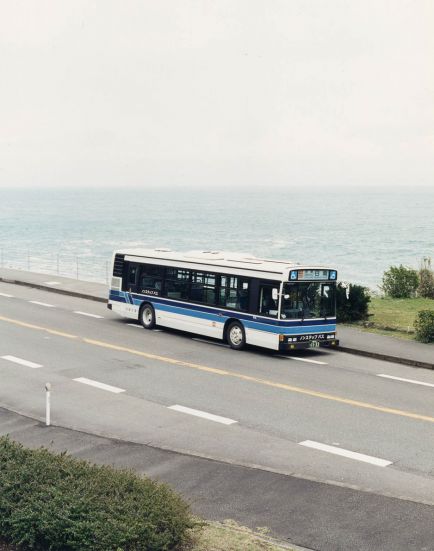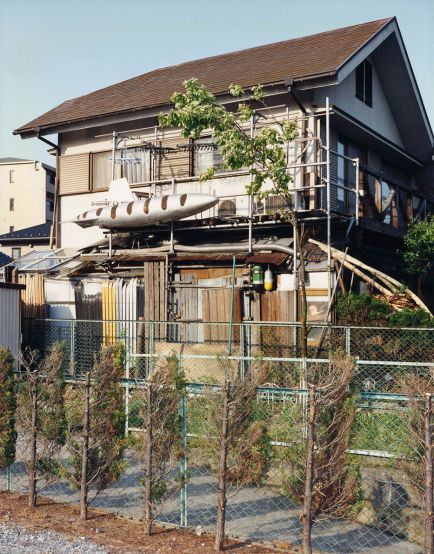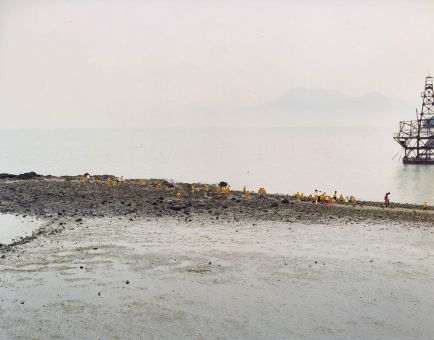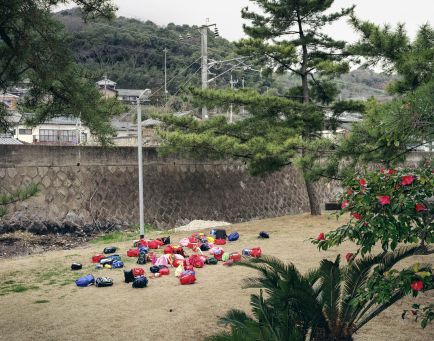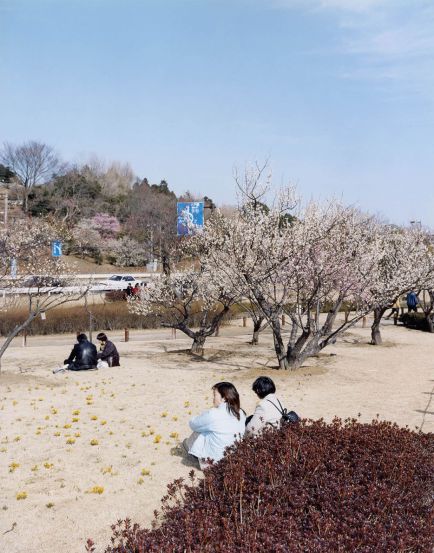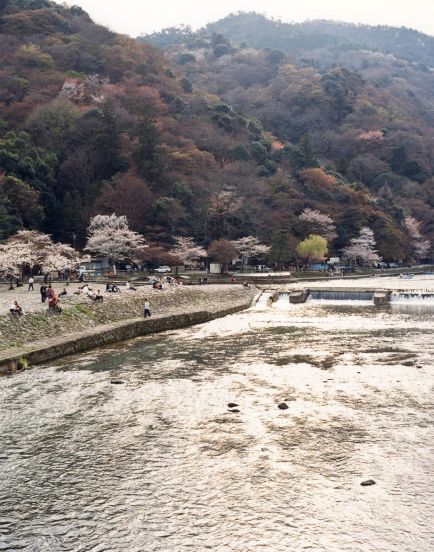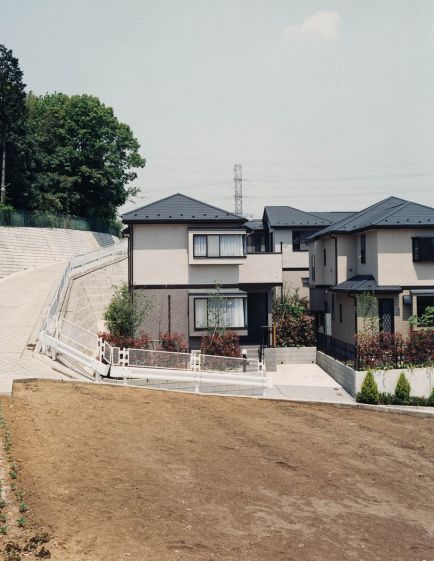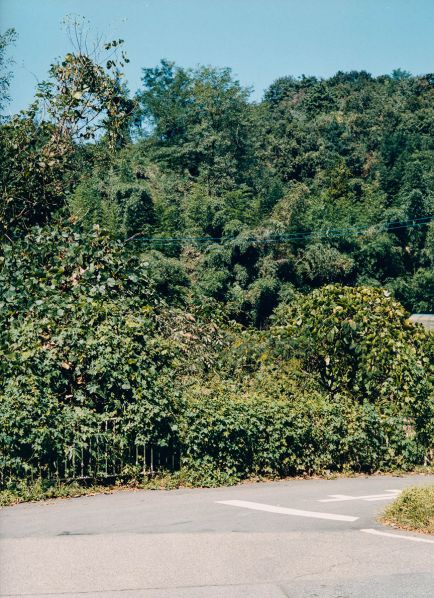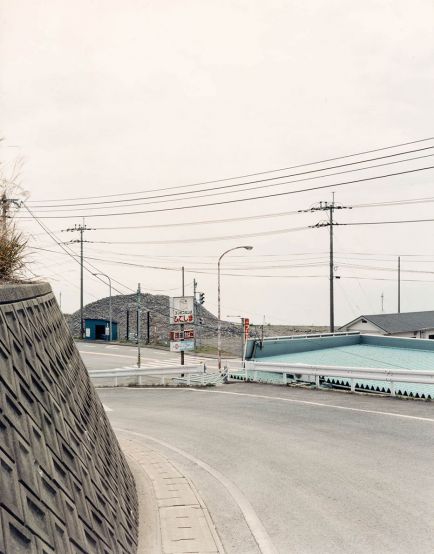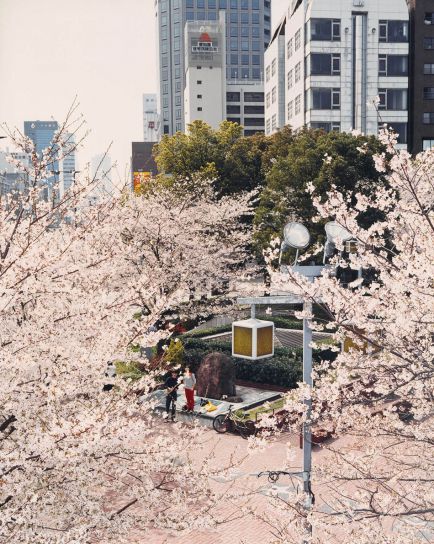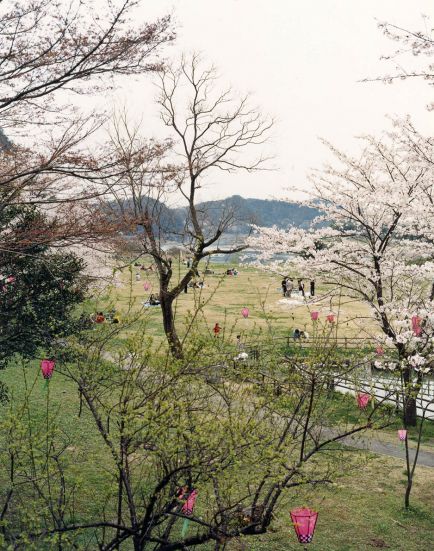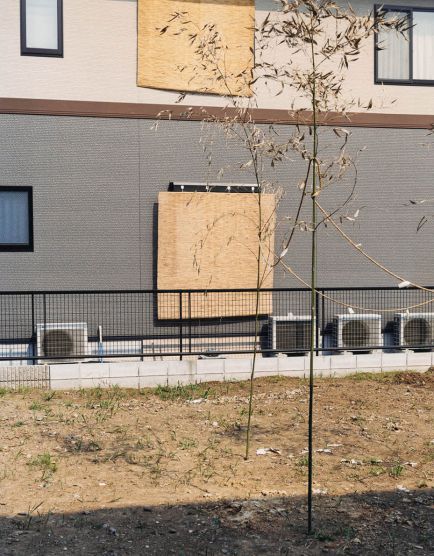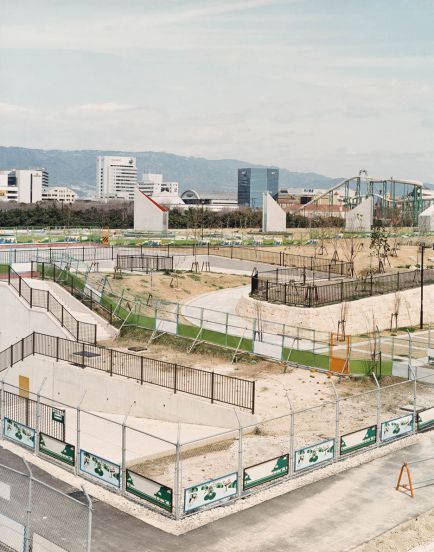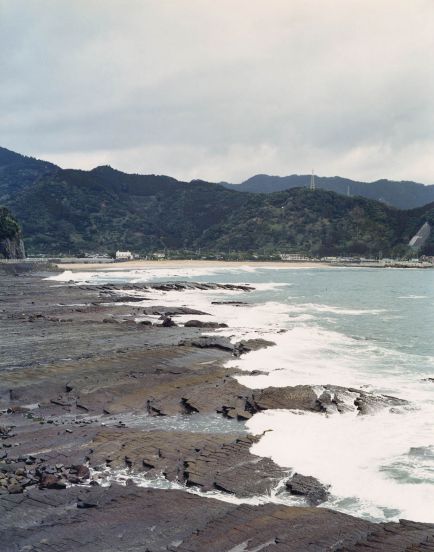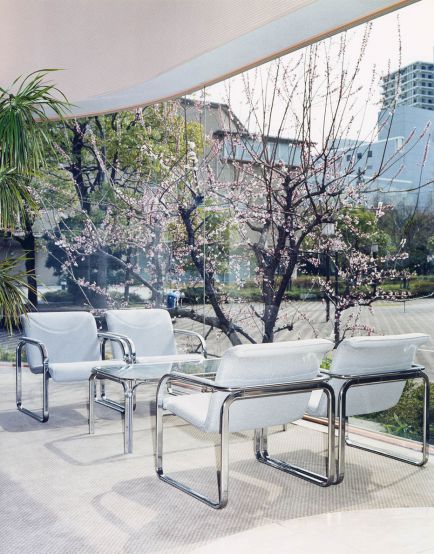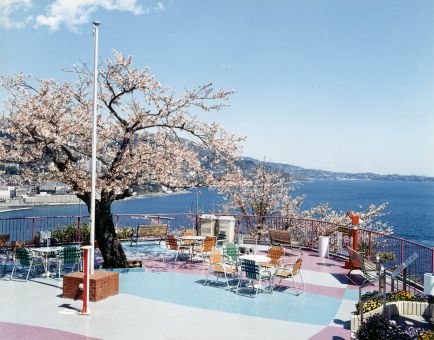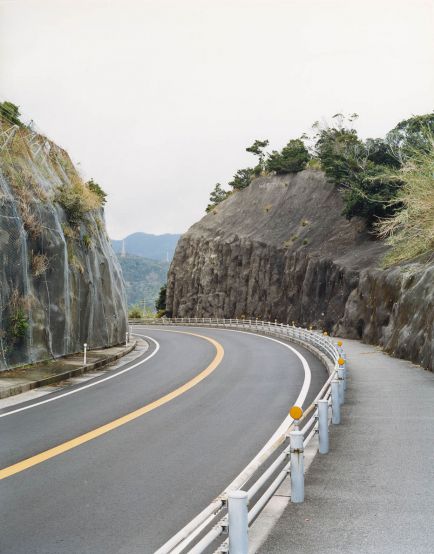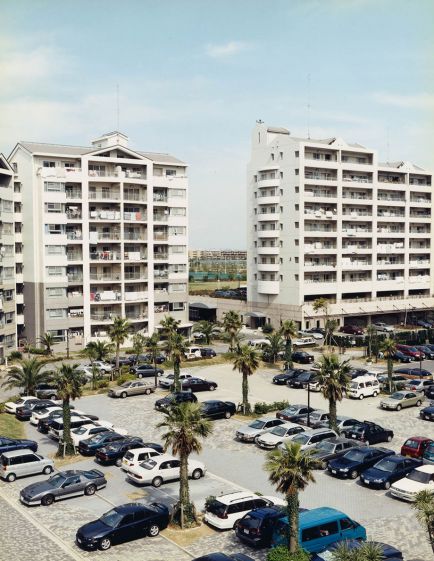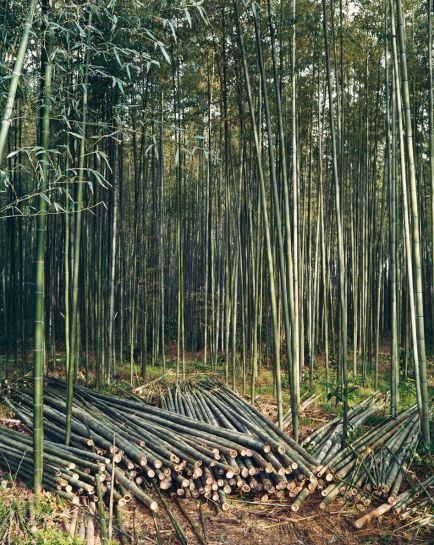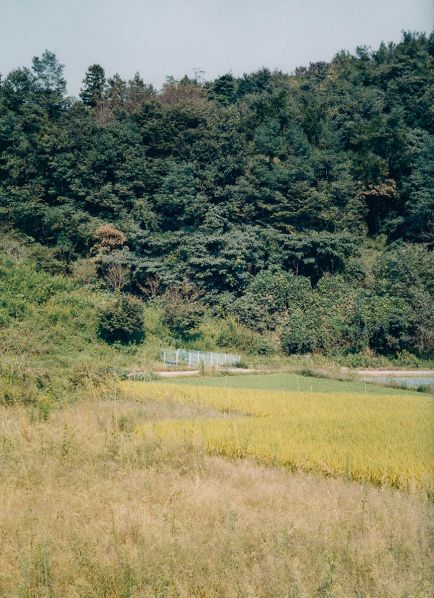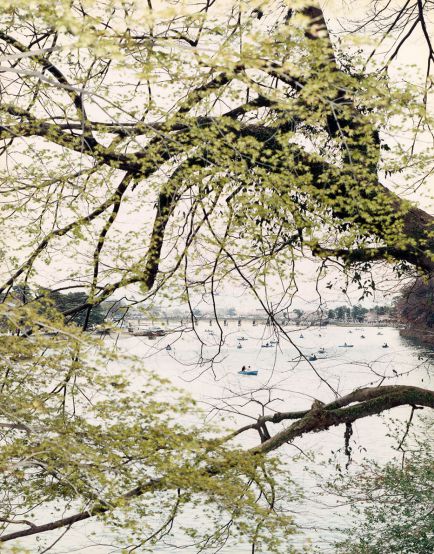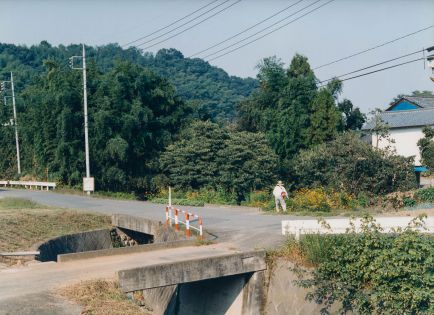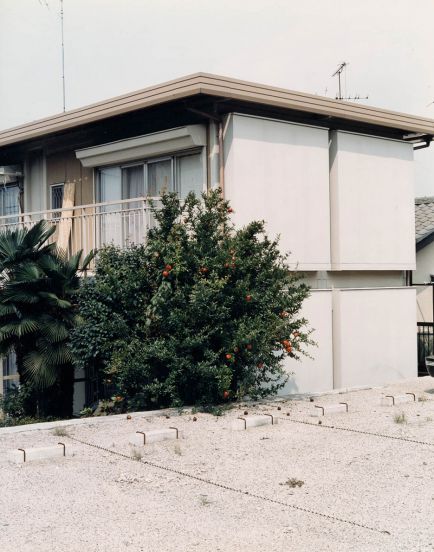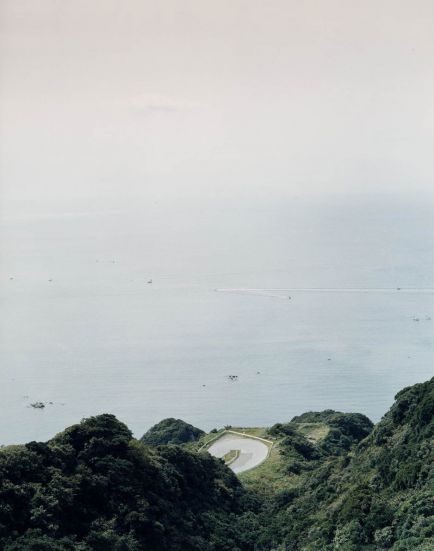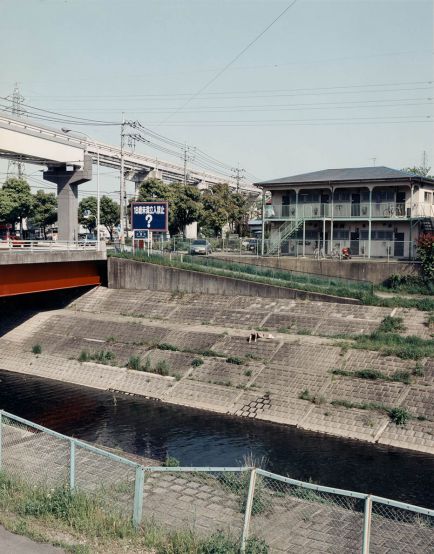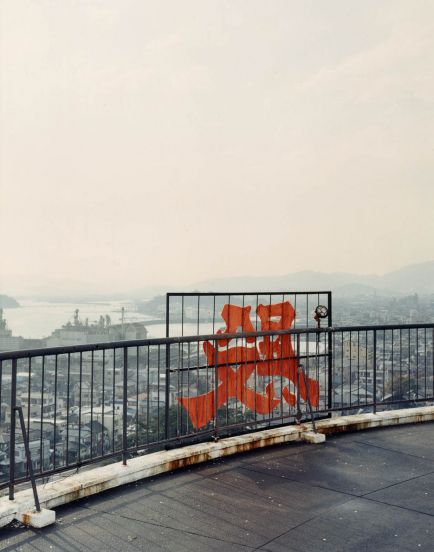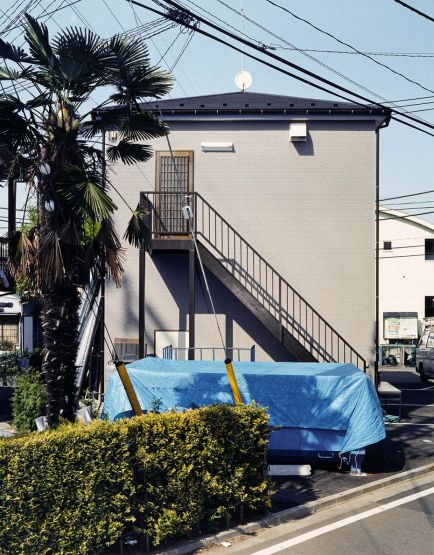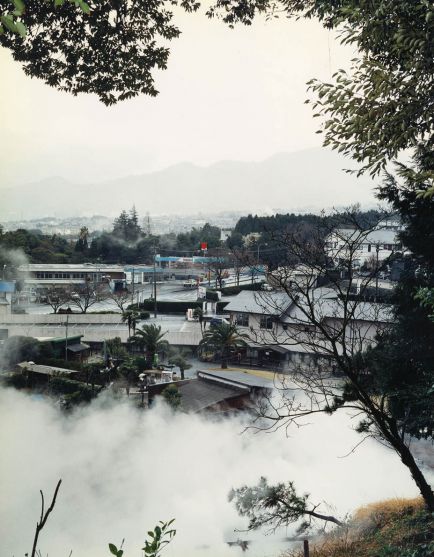Japan
Photographs 1999-2001
Artist monograph & exhibitions
So!
In a typically elegant meditation upon 'Japan', a fictive country that shares a name and certain characteristics with a real one, Roland Barthes considers the haiku, a traditional literary form developed over many centuries. It is a form that, to a Western reader, 'resembles nothing at all', appearing 'neither eccentric nor familiar'. For Barthes, the strangest thing of all is that the haiku allows a suspension of meaning that 'makes impossible the most ordinary exercise of our language, which is commentary'.
'What are we to say of this', he asks, before quoting one of the short poems, and I am minded to ask the same when faced with these photographs by Michael Danner. Here is a mountainside, with bushes and rocks, along which cable cars pass; here, a group of children, each wearing a yellow jacket, spread along a shore-line of black stone; here, a statue of a Buddha looking out above blossom and buildings. One might ascribe them all, the others too, the adjectives which Barthes ascribes haiku — 'simple, close, known, delectable, delicate, "poetic"' — yet here we are attempting to reinstate commentary, and adjectives seem curiously out of place. As we hear in Chris Marker's 1982 film, Sans Soleil:
Just name. To us a sun is not quite a sun unless it is 'radiant' and a spring is not quite a spring unless it is 'limpid'. Here, to place adjectives would be so rude as to leaving price tags on purchases. Japanese poetry never modifies; there is a way of saying boat, rock, mist, frog, crow, hail, heron, chrysanthemum, that includes them all.
I think that Danner's camera attempts to do the same, to speak of many things at once, and yet only one at a time. Perhaps this is something the camera finds relatively easy, which is why photography has developed so strongly in this country. The Japanese vision (if we might give it so Western a term) is a 'vision without commentary' (to quote Barthes) and perhaps this is what photography seems to offer so readily. Photography allows a way of looking which seems almost a necessity in Japan. Whereas in the West buildings or cities are created with a keen sense of organised form, where a plaza allows the space to view an impressive façade, or an avenue frames a monument, in Japan, where such space is often denied, there is no such sense of presentation. Instead, here presentation has to be formed from a collage of diverse elements, choosing some, disregarding others, and then offering this partiality to the viewer with little comment.
This is what Danner's camera does; it is a quiet camera, a camera that watches, that looks, and is aware that looking itself is activity enough. It is through looking that his camera creates what it sees. Perhaps this is all a form of Orientalism, to use Edward Said's term, Danner's photographs and my writing both, a form which is based upon a distinction between 'the Orient' and 'the Occident', and uses this base to build structures of social description. Perhaps this is true; in any case, neither of us find ourselves in a position from which we can argue otherwise. Yet I don't think that it is solely these distinctions that we find here, but rather something far more confused, mixed and uncertain. Perhaps, for Danner, Japan is less 'Oriental' than 'extra-Occidental', in the sense that it is both outside the West and yet also, in some senses, an intensified version of it. This might appear an inevitably 'Occidental' view, although it is one that can be found in Japan also. As Hasegawa Nyosekan remarks of the confusion of the Japanese city that is a consequence of constant change: 'The result is as though a box of toys has been upset — the product of the individual whims of a lot of feebly Western-style architects.' What is interesting is this regard is that Hasegawa suggests that it is the Japanese tendency to view Nature in its parts rather than as a whole that allows this urban bricolage.
One should also note something that the viewer might sense, yet only really notice after some time, and that is the light that is found in these photographs. The novelist Tanizaki Junchiro wrote an essay in 1933 on the aesthetics of traditional Japan titled 'In Praise of Shadows' — 'Were it not for shadows, there would be no beauty', he remarked — yet shadows are precisely what we so seldom find in Danner's photographs. It is true that the photographs — and especially the prints themselves — do possess a 'pensive lustre' such as Tanizaki thought appealed to the Japanese national character, 'a murky light', yet there is also, and often, the 'shallow brilliance' which he considered the epitome the modern age, and the increasing Westernisation of his country. In some photographs, Danner's flash forces yet more light into the scene, edging in white the chrome frames of four lobby chairs in one notable example. Such is the desire of the 'progressive Westerner', as Tanizaki saw it: 'From candle to oil lamp, oil lamp to gaslight, gaslight to electric light — his quest for a brighter light never ceases, he spares no pains to eradicate even the minutest shadow.' Tanizaki was writing at a time when Japan was already chasing darkness from the corners of its rooms — his book is, as he states at its very end, a plea for at least one place to exist where the lights may be switched off; now we can see that here, as in so many things, Japan has adopted characteristics from the West and, through their refinement (or their exaggeration), made them their own.
This is not the same as saying that this abundance of light gives Danner's photographs an absolute clarity, however. From the very first photograph on the cover to the very last one (and a number in between), mist is an extremely important element. Unlike Tanizaki's desire for an obscurity through darkness, however, here the landscape is made obscure by lightness, where trees, buildings, and even mountains dissolve into a white formlessness. What is interesting is that the country Danner is from, Germany, shares such an interest in the aesthetics of fog with the country he now so regularly visits, Japan. Looking at the photograph on the cover of this book, the viewer might be reminded of Caspar David Friedrich's Wanderer above a Sea of Fog (c. 1818), one of the finest, and certainly most familiar, of paintings from the Romantic period. In Danner's photograph, a young woman in shiny streetwear looks out across the expanse, replacing the wind-tousled R ückenfigur surveying Friedrich's empty yet full landscape. We find a similar sense of space in both also, a tension created by the imposition of different planes, a foreground outlined against the distant background, rather than a depth that expands gradually, taking our gaze with it. Friedrich's use of this technique — found also in his Mountain Landscape (1804–5), or Mist (1807) — has even allowed a number of historians to compare his work with the landscape painting of Japan and China. With an admirable sensitivity, Danner is able to bring together all of these elements in one photograph.
Friedrich wrote that: 'When a landscape is covered in fog, it heightens the strength of the imagination and excites expectation.' It might be suggested that such a relationship can be found in the Chinese poetic notion of xing, or expression by allusive incitement. The fog, for Friedrich, was undoubtedly allegorical — it aided God's creation — and allegory is seldom to be found in classical Chinese poetry; yet what can perhaps be found in both is the relationship that consciousness shares with the world, or as François Jullien has noted, 'In China, poetry arises from a relationship of incitement rather than from a method of representation; the world is not an object for consciousness but a partner with consciousness in a process of interaction.' This sense of poetic meaning as something diffuse and atmospheric, rather than ideal, meant that mist or fog was often used (qi-xiang, or breeze-figuration) to express the notion of vague, yet rich, indeterminacy. Or as we might read in Sikong Tu's letter to Ji Pu from the ninth century:
According to Dai Rongzhou, the landscape evoked by the poets is analogous to what is produced when, in the blue fields in the warmth of the sun, a vapour rises from the hidden jade: one can contemplate it but not stare at it fixedly. The figuration beyond the figuration, the landscape beyond the landscape — how can one speak easily of this? 'What are we to say of this', Barthes also asked, some 1100 years later. What has remained, through all this time, is an Oriental appreciation of the poetics of change. In Sans Soleil, once more, we hear:
Poetry is born of insecurity.… By living on a rug that jesting Natures are ever-ready to pull out from under them, they've got into the habit of moving about in a world of appearances, fragile, fleeting, revocable… That's called the impermanence of things.
The haiku is the poetry of this impermanence. 'It's that, it's thus, says the haiku', says Barthes, 'it's so. Or better still: so!' The haiku is like a photograph one takes very carefully, in the Japanese manner, he writes, having neglected to load the camera with film. Thankfully, Danner has not followed these directions so fully and the photographs that we are able to see consequently are able, in turn, to incite in us a sense of beauty, of elegance, emotion even, and perhaps this is the most that we can say.
Jeremy Millar, artist and curator living in Whitstable, England, 2002
close
Japan
CASA-Centro de Arte de Salamanca 2003
with an essay by Jeremy Millar
Design Dagmar Dunkelau
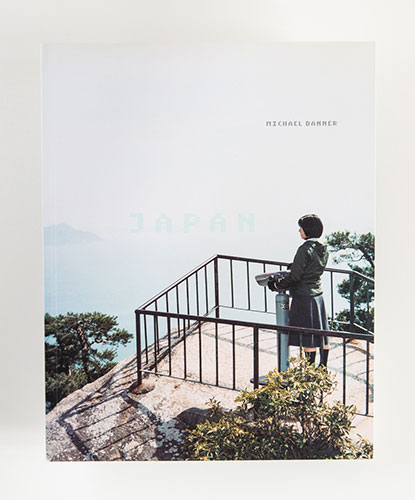
close
Künstlerhaus, Wien
2009
Deutsche Bank, Berlin
2007
Fabrik Heeder, Krefeld
2006
Voies Off, Arles, large scale projections
2004
Lumas, Berlin
close
